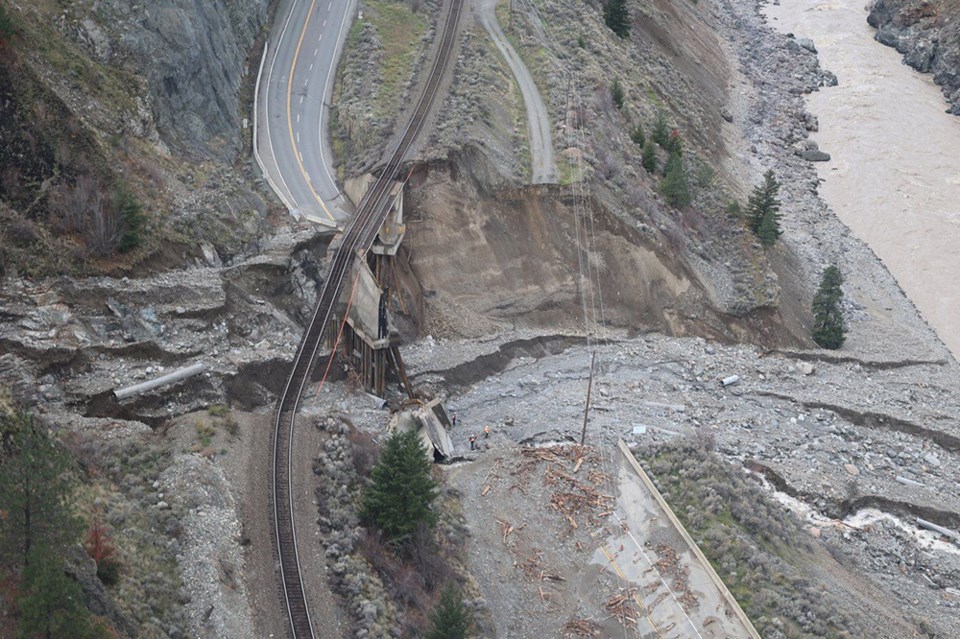It wasn’t easy watching the national news last week.
A torrential rain system, labelled an atmospheric river by meteorologists (the same people who coined such phrases as a heat dome and a polar vortex) swept through southern B.C. Two communities, Merritt and Princeton, were evacuated. Others, such as Abbotsford and Chilliwack, incurred significant damage.
Highways were closed due to all of the rain. A portion of the Coquihalla Highway, which runs from Hope to Kamloops, was washed away. (It’s similar to what happened on Highway 1 west of Maple Creek in 2010).
Many farms have been submerged by all that rain, and livestock and other animals have died.
It hasn’t been a pretty sight. I can’t imagine what people out there are going through.
For those wondering, my family is fine. Mom and Dad, of course, moved off the farm in January 2020. Their house in Aldergrove is on elevated ground. No property damage. My sister and brother-in-law’s place is fine. The horses that we still own weren’t affected. Our dog has absolutely no problem with walking in the rain.
Our old horse farm apparently weathered the storm, too.
My uncle and aunt in Fillmore picked a doozy of a time to visit my folks. They were on Highway 7 on Nov. 14, just hours before the mudslides hit and closed that stretch of highway. They were safely at my folks’ place when the slides occurred.
Due to all the highways that are closed, and since the Lower Mainland is essentially land-locked, they had to go through the U.S. to get back to southeast Saskatchewan.
I don’t know if any of my friends in B.C. suffered damage to their property due to the storm. A few have had photos on Facebook of highways and fields that are under water, but I haven’t seen anyone saying “our home is gone.” Then again, most of the people I know aren’t in the worst-hit areas, and those that might be, aren’t necessarily active on social media.
Still, it’s tough to see areas that you’re familiar with – roads that you’ve driven, communities you’ve visited, areas where you have fond memories – under water.
Obviously those of us in southeast Saskatchewan aren’t strangers to floods. Many of us remember the flood of 2011, which left water on both sides of Highway 39 between Macoun and Midale, nearly destroyed Benson, created a new lake outside of Lampman, submerged tourist attractions along the Souris River, and, worst of all, destroyed people’s homes.
It was so sad to see the damage in the peaceful history village of Roche Percee.
There was extensive flooding in the Carnduff, Gainsborough and Redvers areas in 2014. A powerful thunderstorm dropped five inches of rain on Estevan in rapid fashion in 2016, and there was more flooding in June 2018.
We know that Mother Nature can pack a potent punch, and water is among the ways we’ll see damage.
We can identify and sympathize with what they’re going through in B.C. And we have to remember that as bad as it was here, there are a lot more people in the affected areas of southern B.C.
They need dry weather. While the weather did co-operate for a few days, expecting a prolonged dry spell in B.C. in November is like asking for a few days of double-digit highs in southeast Saskatchewan in February.
This atmospheric river has fuelled calls to make changes to reduce our environmental impact. For the alarmists, they’re saying we need to halt our use of fossil fuels pronto. They were also sounding alarm bells following the heat dome earlier this year that set national records several times over, and the ensuing forest fire that ravaged the village of Lytton, B.C
While we unquestionably need to be mindful of how our collective behaviour can impact the environment, and we need to look for ways to reduce our carbon footprint, the alarmists have to realize the sheer challenge of ditching fossil fuels, and how that would have dire consequences for our economy.
It is troubling when these incidents have occurred, and it is troubling when they continue to happen, especially as they happen with greater frequency. The rain storm in B.C. will carry a big toll, not just because of the lives lost and the anguish from flooded properties, but because of the economic impact.
And as these incidents become more common, the calls for action will grow stronger, whether we want to hear them or not.
As for the victims of this atmospheric river, let’s hope they’re able to recover and eventually see some normalcy in their lives again.










